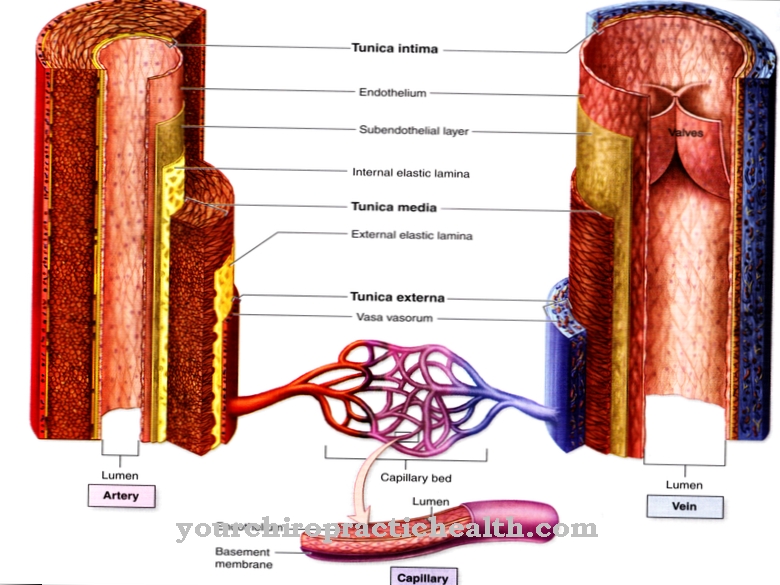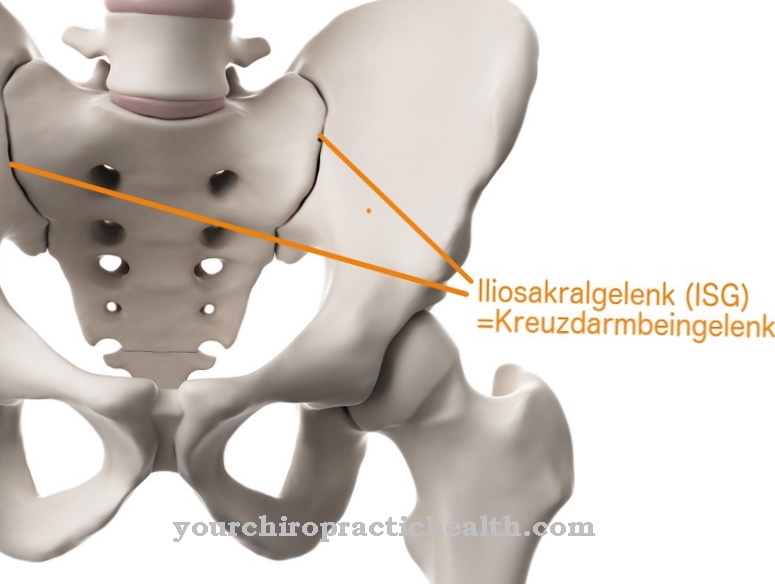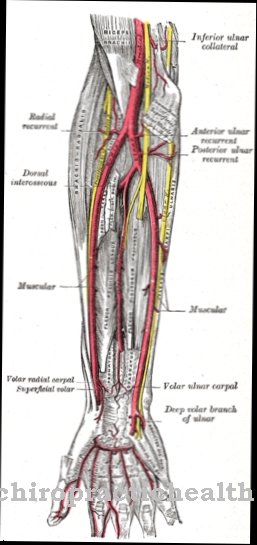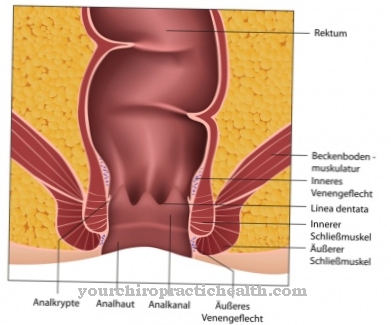Egg joints are also called Ellipsoid joints and are one of several joint forms in the human body. A concave joint surface with an oval end engages in a larger joint socket in these joints. Osteoarthritis is one of the most important joint diseases.
What is an egg joint?
In joints, bones meet to form flexible connections. The human body contains 143 joints. Among them are fake and real joints. Real joints have a gap between the ends of the bones, also known as the joint gap.
The real joints of the human body vary in shape depending on their location and the associated functional requirements. One type of joint is the egg joint. This shape variant of real joints owes its name to its egg-like anatomy. Like many other types of joints, the egg joint is based on the so-called key-lock or hand-in-glove principle. The two bones that meet in it are accordingly designed according to the form-counter-form principle and in this way loosely interlock.
This interlocking makes different levels of movement possible in the joint, each with a certain degree of mobility. The biaxial egg joint is characterized, for example, by adduction, abduction, flexion and extension. Egg joints are sometimes also called ellipsoid joints. The wrist joint is a characteristic example of this type of joint. The first head joint also corresponds to an egg joint.
Anatomy & structure
Egg joints consist of two differently shaped joint surfaces. These surfaces interlock like a key in a lock. The egg-like structure consists of a convex joint surface and its counterpart: the joint socket. The convex joint surface has an oval cross-section that fits perfectly into the somewhat larger joint socket.
Since egg joints are real joints, the egg joint has a different anatomy than the so-called fake joints. As a real joint, the ellipsoid joint is one of the diarthroses that have a gap in the form of the joint between the ends of their bones. All joint surfaces involved are covered with articular cartilage. A joint capsule lies around the egg joint and thus stabilizes it. This joint capsule consists of an outer fibrous membrane in the form of tight connective tissue and an inner synovial membrane in the form of epithelial-like connective tissue associations.
The articular or capsular ligaments strengthen the stabilizing outer membrane. Joint ligaments in the joint capsule of real joints carry a layer of the synovial membrane and are thus connected to the capsule. The joint capsule of the egg joint encloses its joint cavity without gaps and rests against the joint bodies. Joint capsules contain a viscous fluid called synovia, or joint fluid.
Function & tasks
All joints in the body connect two or more bones to one another, have a stabilizing effect and also give the bones a certain degree of mobility. The mobility of joints depends on their location and is ideally matched to the functional requirements that arise for individual bones and limbs. Joints are capable of uniaxial or multiaxial movements, depending on their type. Egg joints move biaxially.
Four movements are possible on their two axes of movement. The first movement is the sideways movement in the right or left direction. This movement is also called adduction. The opposite movement and thus the return movement from the sideways movement corresponds to abduction. In addition to these two movements, ellipsoid joints realize forward and backward movement. The forward movement in this context is known as flexion. The backward movement is the extension. As a rule, these two forms of movement are stretching and bending in order to realize minimal rotational movements.
Egg joints are found in the human body mainly in the form of the head joint between the atlas and the skull and in the form of the upper wrist. The flexion and extension movements of the upper head joint between the atlas and the skull are involved in everyday processes such as nodding. Like the wrist, the head joint is significantly restricted in its range of motion compared to other types of joint. The stabilizing character comes into play at this point. Egg joints therefore already have protection against twisting, which is intended to prevent damage to the joint and to hold the joint surfaces together.
Diseases
The most famous joint disease is osteoarthritis. This is excessive wear and tear on the joints, or rather their protective cartilage layer. According to the narrower definition, osteoarthritis is only present if the wear and tear exceeds the normal age range.
Excessive stress due to increased body weight or traumatic deformities can promote the painful joint disease. Congenital causes can also be considered as risk factors, for example congenital misalignment of the joints or deformities due to hereditary bone diseases.In individual cases, osteoarthritis also occurs as a result of joint inflammation and in this case is referred to as secondary osteoarthritis. If there is an effusion caused by overload in the joint, the resulting osteoarthritis is counted among the secondary inflammatory reactions and is called activated osteoarthritis.
In principle, not only the egg joint, but every type of joint can be affected by arthritic changes. Osteoarthritis is therefore one of the most widespread bone diseases worldwide. The most important symptoms include exertion-dependent pain, which, depending on the stage of osteoarthritis, eventually extends to periods of rest. In the course of the disease, the protective cartilage over the joint surfaces continues to wear down. Dislocations are far less common than osteoarthritis processes in egg joints such as the wrist due to their hand-in-glove anatomy.



.jpg)








.jpg)



.jpg)










.jpg)
